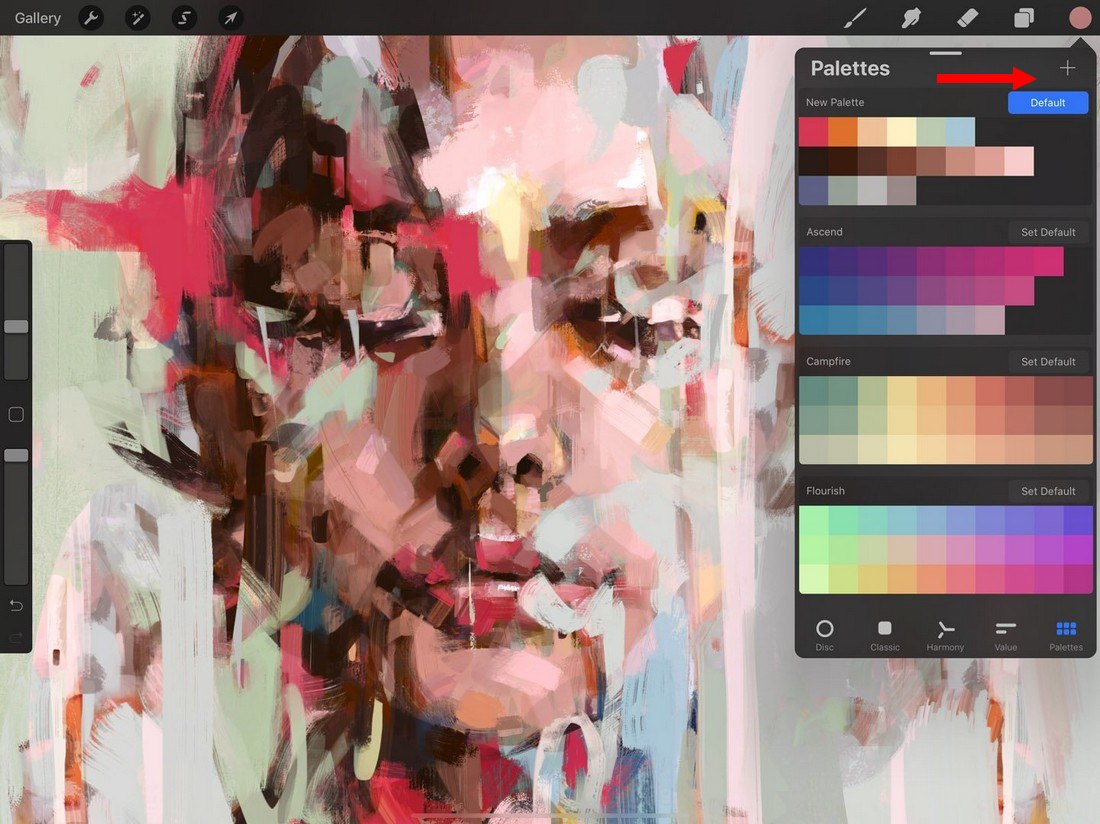
Tap the Adjustments button to commit changes. Change and slide the color boxes to your liking. Tap and hold down on the color boxes to delete them. The left side of the gradient bar will affect the darker areas of the layer, while the right side will affect the lighter areas of the layer. In the Gradient Map interface, you can rename the gradient palette, change the colors in the boxes, slide the color boxes, or add more colors to the gradient bar. Continue reading to learn about the Gradient Map interface. Tap a gradient palette or the + icon to open the Gradient Map interface. Tap and hold a gradient palette to duplicate or delete it. In the Gradient Library, choose one of the default gradient palettes or create your own. Tap the Adjustments button, and then tap Gradient Map. The Gradient Map feature looks at the lights/highlights, darks/shadows, and midtones. If you're not happy with your gradient colors, you can even change them using the Gradient Map feature.The Gradient Map feature can not only recolor gradients but also entire drawings. Recolor a Gradient Using the Gradient Map Feature Tap the Selection button to commit changes. Next, tap Feather and adjust how soft you want the edge to be. The following image shows steps 1 through 4. If you are using the Freehand mode, tap the grey circle node after drawing your selection. Pick a Selection mode, and draw your selection shape. Tap Color Fill in the Selection toolbar at the bottom to enable it. Tap the Selection button in the top menu. Fill the layer with that color, and pick another color. Open the Procreate color palette and pick a color. The Feather option is used to make soft/blurry edges. Make a Gradient Using the Selection Tool’s Feather Option Merge layers into a single gradient layer. If you are not satisfied with the gradient blending, you can apply a small amount of Gaussian blur to the layer or use the Smudge tool. Step 3 - Use Gaussian Blur to Fix Gradient Continue to add as many colors as you would like. Starting with your pen off the canvas, slowly draw across the canvas to create the gradient. Zoom out so the canvas is smaller and easier to work with. Then, open the Brush Library and select Soft Brush in the Airbrushing category. Instead, it allows you to make gradients that follow drawn curves. This method may not be as precise if you want straight lines of gradients. See the following image for a circular gradient example.


This method of using Gaussian blur to create a gradient can also be applied to other shapes of solid colors and not only lines. See the following image for a multicolor gradient example. Make sure all the colors are on a single layer before applying the Gaussian blur. You can create gradients with as many colors. Merge the layers into a single gradient layer by pinching the layers together with your fingers.

Then tap Gaussian Blur and select Layer.Īdjust the amount of Gaussian blur by sliding your finger or pen left and right across the screen. Tap the Adjustments button in the top menu. Pick another color and color fill half that layer. Step 2 - Fill New Layer With Another Color See the image in step 2 for a better understanding.


 0 kommentar(er)
0 kommentar(er)
